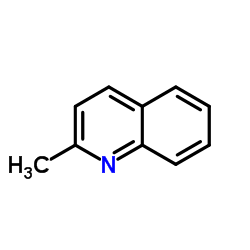Synthesis and SAR study of acridine, 2-methylquinoline and 2-phenylquinazoline analogues as anti-prion agents.
H Cope, R Mutter, W Heal, C Pascoe, P Brown, S Pratt, B Chen
Index: Eur. J. Med. Chem. 41(10) , 1124-43, (2006)
Full Text: HTML
Abstract
Transmissible spongiform encephalopathies (TSEs) are thought to arise from aggregation of a protease resistant protein denoted PrP(Sc), which is a misfolded isoform of the normal cellular prion protein PrP(C). Using virtual high-throughput screening we have selected structures analogous to acridine, 2-methyquinoline and 2-phenylquinazoline as potential therapeutic candidates for the treatment of TSEs. From the synthesis and screening of constructed libraries we have shown that an electron-rich aromatic ring attached through an amine linker to the position para to the ring nitrogen is beneficial to both binding to PrP(C) and the suppression of PrP(Sc) accumulation for acridine and 2-methylquinoline analogues. 2-Phenylquinazoline analogues appear to utilise a different mode of action by binding at a different location and/or pose. We report IC50s in the nanomolar range.
Related Compounds
| Structure | Name/CAS No. | Molecular Formula | Articles |
|---|---|---|---|
 |
Quinaldine
CAS:91-63-4 |
C10H9N |
|
The PaaX-type repressor MeqR2 of Arthrobacter sp. strain Rue...
2013-03-01 [J. Bacteriol. 195(5) , 1068-80, (2013)] |
|
Quantitative structure-activity relationship analysis of inh...
2005-01-27 [J. Med. Chem. 48 , 440-9, (2005)] |
|
Exploring QSAR and QAAR for inhibitors of cytochrome P450 2A...
2009-01-01 [Eur. J. Med. Chem. 44 , 1941-51, (2009)] |
|
Predictive three-dimensional quantitative structure-activity...
2005-06-02 [J. Med. Chem. 48 , 3808-15, (2005)] |
|
A fluorometric assay for the determination of 1-deoxy-D-xylu...
2001-09-01 [Anal. Biochem. 296(1) , 101-5, (2001)] |